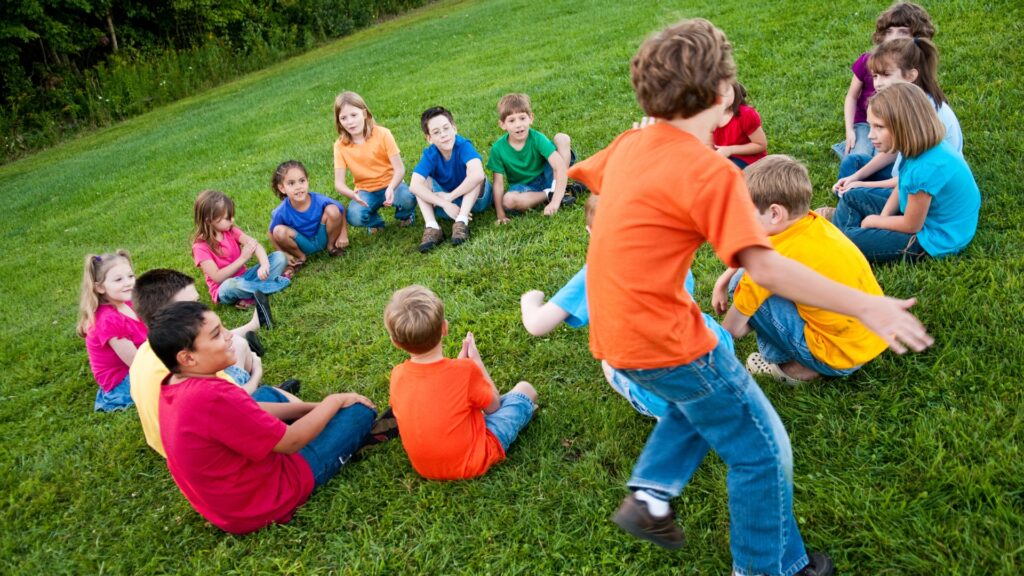The Importance of Play with Rules
In the dynamic world of early childhood education, where every interaction shapes the developing minds of young learners, the concept of “Play with Rules” emerges as a powerful catalyst for cognitive, social, and emotional growth. Drawing insights from neuroscience, psychology, and best practices in education, this blog post delves into the profound importance of guided play experiences in fostering holistic development among our budding scholars.
The Neuroscience of Play
Neuroscience reveals that the developing brain is highly plastic and adaptable during early childhood. Play, characterized by spontaneity and exploration, activates various regions of the brain crucial for cognitive functions. However, when we introduce rules into play, we stimulate additional neural pathways associated with executive functions like decision-making, problem-solving, and impulse control.
Research suggests that these executive functions are pivotal in preparing children for future academic success and social competence. Through play with rules, children not only exercise their creativity but also engage in a cognitive workout that strengthens the neural connections necessary for navigating the complexities of the world around them.
The Psychological Significance
From a psychological perspective, play with rules contributes significantly to the development of crucial socio-emotional skills. By engaging in rule-based play, children learn to negotiate, cooperate, and resolve conflicts. These experiences are akin to a psychological gym, where emotional intelligence and social competence are honed through interaction and collaboration.
Moreover, adhering to rules in play instills a sense of fairness and justice, fostering the moral compass that guides ethical decision-making. As educators, promoting play with rules lays the foundation for the development of responsible, empathetic individuals who can thrive in a diverse and interconnected society.
Best Practices in Early Childhood Education
In the realm of early childhood education, the integration of play with rules is not a mere pedagogical choice but a fundamental principle. Research-backed best practices advocate for a balanced approach that combines child-led exploration with structured, rule-based play experiences.
Educators are encouraged to create environments that offer a spectrum of play opportunities, ranging from free play that encourages creativity to guided play with rules that builds cognitive and social skills. This balance ensures that children receive a comprehensive developmental stimulus, nurturing both their independence and their ability to function within a structured social framework.

Examples of Play with Rules
1. The Traffic Light Game
The Traffic Light Game is a fun and interactive activity designed to engage children in movement and enhance their understanding of basic traffic signals. This game is particularly suitable for children aged 1-3 years, as it combines physical activity with a simple rule-following concept.
How to Play the Traffic Light Game:
- Setup:
- Designate an open play area where children can move freely.
- Explain the three colors of a traffic light: red, yellow, and green.
- Assign Movements to Colors:
- Red Light: When you show and say “Red light,” children must stop and freeze in place.
- Yellow Light: When you show and say “Yellow light,” children can walk in place or take slow steps.
- Green Light: When you show and say “Green light,” children can move freely around the play area.
- Call Out Colors:
- Begin the game by calling out the colors randomly. For example, “Green light!” prompts children to move, while “Red light!” requires them to stop instantly.
- Variations:
- To add excitement, you can incorporate variations like “Fast Green Light” or “Slow Yellow Light,” adjusting the pace accordingly.
- Introduce different movements for each color, such as jumping on green, tiptoeing on yellow, and freezing on red.
- Encourage Participation:
- Engage children by modeling the movements yourself and cheering them on during the game.
- Use playful language and expressions to make the activity enjoyable and stimulating.
- Celebrate Success:
- Celebrate each child’s ability to follow the traffic light signals and encourage positive reinforcement.
The Traffic Light Game not only promotes physical activity and coordination but also helps children develop listening skills and the ability to follow simple rules. It’s a delightful way to introduce the concept of traffic signals in a playful and age-appropriate manner, fostering both learning and movement in the early years.
2. Game: “Duck, Duck, Goose”

For children aged 4-5 years, games with rules can be slightly more complex to align with their developing cognitive and social skills. We suggest “Duck, Duck, Goose” game.
How to Play:
- Setup:
- Gather children in a circle, and choose one child to be the “tagger” or “goose.”
- Start with “Duck”:
- The chosen child walks around the outside of the circle, gently tapping each seated child on the head, saying “duck, duck, duck…”
- Switch to “Goose”:
- When the tagger says “goose,” the child tapped as “goose” stands up and starts chasing the tagger around the circle.
- Chase and Tag:
- The tagged child tries to catch the tagger before they can sit in the vacant spot. If the tagger sits successfully, the tagged child becomes the new tagger for the next round.
- Variations:
- To add excitement, you can introduce variations like hopping instead of walking during the “duck” phase or incorporating animal movements during the chase.
- Encourage Inclusion:
- Emphasize the importance of fair play and encourage children to cheer for their friends during the game.
“Duck, Duck, Goose” is an excellent game for promoting social interaction, cooperation, and physical activity. It involves both sitting and active phases, allowing children to practice listening, responding, and taking turns. As they engage in the game, children also develop essential motor skills and learn to navigate social dynamics within a structured play environment.
3. Game: “Simon Says” – Enhanced Edition
For children aged 6 years, games with rules can become more intricate to align with their growing cognitive abilities and desire for challenges. Enhanced “Simon Says” game could be a good choice.
How to Play:
- Setup:
- Gather the children in an open space and designate one person as “Simon.”
- Traditional Commands:
- Begin with traditional “Simon Says” commands, such as “Simon says jump” or “Simon says touch your toes.” Participants follow the command only if preceded by “Simon says.”
- Incorporate Complex Commands:
- Introduce more complex commands without saying “Simon says.” For example, say, “Spin around” without the “Simon says” prefix.
- Selective Listening:
- The challenge is for the children to listen carefully and only follow the commands that begin with “Simon says.” If a command is given without “Simon says” and a child follows it, they are out for that round.
- Creative Commands:
- Encourage Simon to get creative with commands, testing the participants’ ability to pay attention and differentiate between valid and invalid commands.
- Rotate Simon:
- Rotate the role of Simon, allowing different children to take on the leadership role. This adds variety and keeps the game engaging.
- Encourage Sportsmanship:
- Emphasize the importance of good sportsmanship, and celebrate the success of those who successfully follow the correct commands.
“Simon Says” – Enhanced Edition offers a playful yet challenging experience for 6-year-olds, fostering cognitive skills like attention, listening, and selective processing. The game promotes both physical activity and mental engagement, making it an ideal choice for this age group as they continue to develop their ability to follow instructions and enjoy more complex rule structures.
More games
In the tapestry of early childhood education, “Play with Rules” emerges as a thread that weaves together the intricate patterns of cognitive, social, and emotional development. The neuroscientific underpinnings emphasize the plasticity of the young brain, while psychological insights highlight the social and emotional dividends of rule-based play.

Elevate your teaching skills and stay ahead of the curve! Receive our monthly Insights, packed with professional development opportunities, classroom inspiration, and the latest trends in education. Don’t miss out on the chance to take your teaching to the next level. Subscribe now!







